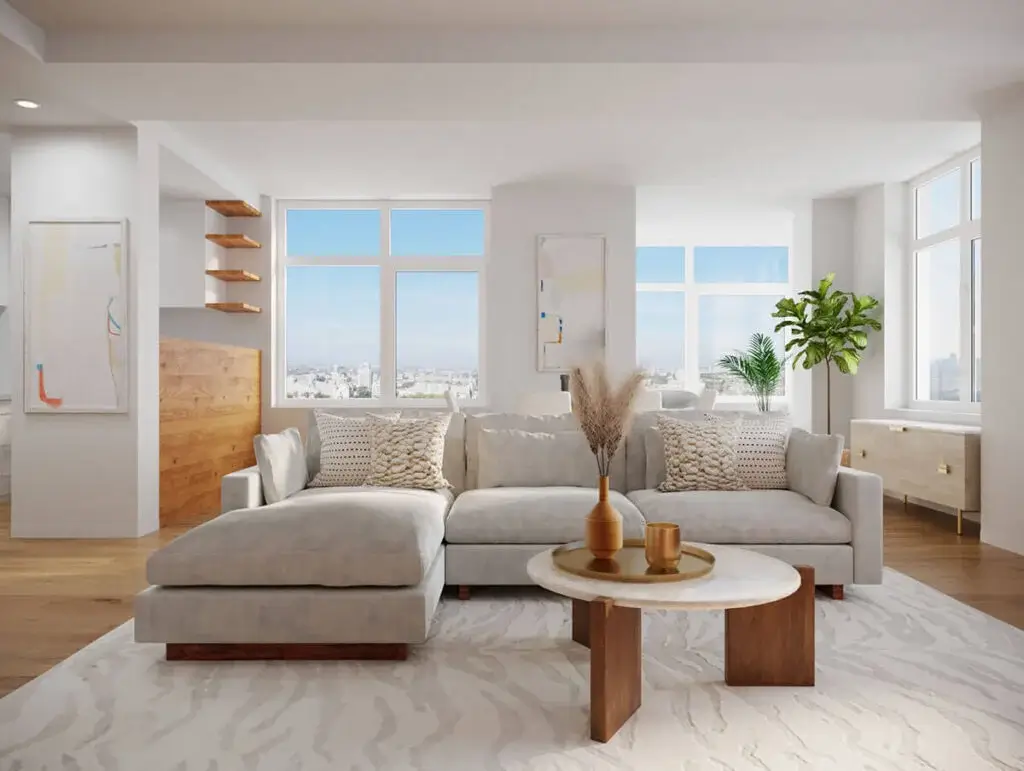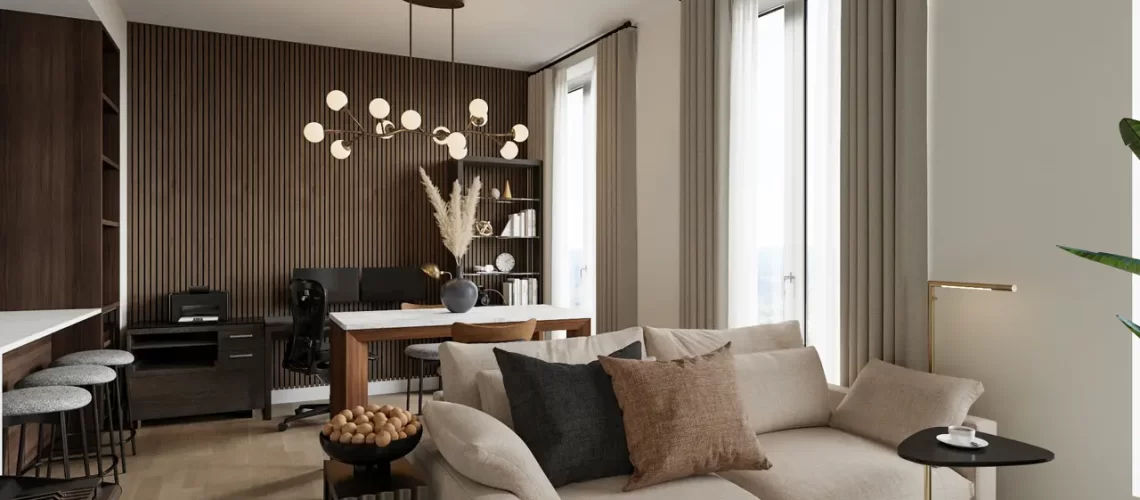Introduction to Efficient Space Utilization in Small Homes
Living in a small home doesn’t mean you have to sacrifice comfort or style. The key lies in using your space wisely. Efficient space utilization goes beyond just getting rid of things you don’t need; it’s about smart planning and being creative with what you have. It means looking at your available space with a fresh eye, identifying underused areas, and coming up with ways to make them work harder for you. Whether it’s multi-functional furniture that offers storage solutions, utilizing vertical spaces for shelves, or simply reorganizing to create a more open, breathable living area, each step you take towards efficient space utilization can have a big impact on your home’s feel and functionality. With thoughtful consideration and some innovative thinking, even the smallest space can be turned into a comfortable, stylish haven that meets all your needs.
Understanding the Basics of Space-Saving Design
Space-saving design is all about making the most of what you’ve got. It’s not just about smaller furniture or hanging shelves—though those help. It’s about using every inch smartly and creating a flow that makes your place feel bigger and more welcoming. First off, start with decluttering. You can’t know what space you truly have until you clear out stuff you don’t need. Then, think multipurpose. Furniture that serves more than one purpose—a bed with drawers underneath, for example—can be a game-changer. Lighting matters too; brighter spaces appear larger, so use both natural and artificial light to open up your space. Finally, remember mirrors. They’re not just for checking your outfit; they can double the feel of any room by reflecting light and views. Stick with these basics, and you’ll start seeing your small space in a new light, literally and figuratively.
Multi-functional Furniture: A Key to Maximizing Space
Choosing multi-functional furniture is like having a Swiss Army knife for your home. It’s about making the most out of every inch. Let’s break it down. A sofa bed works double duty – seating for the day and a bed for the night. Think of it as a hero piece in a studio apartment or a guest room. Then there’s the classic ottoman. Not just a footrest but a secret storage spot and, in a pinch, extra seating. Opt for a coffee table that lifts to become a dining or work table. Suddenly, one piece of furniture is doing the job of three. And don’t overlook the humble kitchen cart. It’s not just for meals; it’s storage, it’s a work surface, and it’s portable. The trick is to choose furniture that works harder so you can maximize your space and keep your home looking and feeling spacious.
The Importance of Decluttering for Space Efficiency
Decluttering is your first big step towards making the most of small spaces. It’s more than just tidying up; it’s about making room for what truly matters. When you declutter, you clear out all the unnecessary stuff that’s been holding you back from efficiently using your space. Think about it, each unused item taking up space could be an area for storage, a spot for your favorite chair, or even just open room to make your place feel bigger. By focusing on keeping only what you use and love, you’ll not only make your space more functional but also more inviting. Remember, in small spaces, every bit counts. Decluttering isn’t just about making space; it’s about setting the foundation for a better, more efficient lifestyle at home.
Storage Solutions: Innovative Ideas for Small Areas
Under-the-bed containers are not the only answer when you’re cramped for space. Believe it or not, there are plenty of innovative ways to store your stuff without cluttering your home. Think vertical. Shelves that reach up near the ceiling can hold loads of things and make a room feel bigger by drawing the eye upwards. Next, embrace furniture that does double duty. A coffee table that also stores books, or a bed with built-in drawers, can be game changers. Don’t overlook the backs of doors; racks or hooks here are perfect for items you use regularly. And remember, walls aren’t just for pictures. Install hooks or magnetic strips in the kitchen to hang utensils, pots, or even spices. These tips not only save you space but keep your home looking neat and organized.
The Role of Lighting and Color in Creating the Illusion of Space
Light and color are key to making a small space feel bigger and more inviting. A well-lit room feels more open. Aim for natural light wherever possible. If your space lacks windows, consider adding more artificial lighting options like LED strips or task lights to brighten it up. When picking colors, go for light shades. Whites and pastels reflect light, making your room seem larger. Dark colors absorb light, doing the opposite. Use mirrors to bounce light around the room, enhancing the spacious feel. Remember, the goal is to create a bright, airy environment that tricks the eye into thinking the space is bigger than it actually is.
Utilizing Vertical Space: Tips and Tricks
When you’re working with small spaces, think up, not just around. Walls are prime real estate in tiny rooms. Here’s how you can use vertical space smartly. First off, shelves are your best friends. Place them high or stack them for an elegant solution to storage woes. Don’t just stop at books; shelves can hold anything from plants to picture frames. Secondly, think about wall-mounted desks or foldable tables. They save floor space while giving you a work area that disappears when not needed. And let’s not forget about hooks and magnetic strips. Install them on the back of doors or under cabinets to hang everything from keys to kitchen tools. This way, your essentials are out of the way but within reach. Lastly, consider tall furniture pieces, like bookcases or storage units, that use more vertical inches and create a sense of height. Remember, every inch counts, so aim high!
Out-of-the-Box Ideas for Efficient Space Utilization
Thinking smart about your small space can completely transform it. Start with multi-functional furniture – a sofa that turns into a bed or a coffee table with hidden storage. These pieces serve double duty and save precious space. Next, look upwards. Vertical space is often underused. Install shelves above door frames or windows. This isn’t just practical; it adds character to your room. Also, think about fold-down desks or tables that tuck away when not in use. Another genius move? Use mirrors. They make any room feel bigger and brighter by reflecting light. Don’t forget the space under your stairs – it’s perfect for storage or even a cozy reading nook. Finally, declutter regularly. Less stuff means more space. It’s that simple. Keep these tips in mind, and watch your small space punch above its weight.
Real-Life Success Stories of Small Space Transformation
Real people like you have turned cramped spaces into cozy havens. Take Sarah, living in a 500-square-foot apartment in the city. She installed wall-mounted shelves, freeing up floor space and making her home look bigger. Then there’s Mike, who turned his tiny balcony into a mini garden oasis, showing that no area is too small for a bit of greenery. Emma, on the other hand, transformed her cluttered living room into a multifunctional space with a fold-down desk and a sofa bed. These stories prove that with a bit of creativity and the right strategies, even the smallest spaces can become functional and stylish. It’s all about making the most of what you have.
Summary: Making the Most Out of Every Inch
Making every inch of your small home work for you is simpler than you think. You don’t need to be a design guru or have a hefty budget. Start by decluttering. Chuck out anything you don’t need. Next, think vertical. Shelves up high? Yes, please. Dual-purpose furniture? A sofa that turns into a bed or a table that doubles as storage is brilliant. Mirrors also work wonders. They make spaces feel bigger. Don’t forget lighting. Brighter places seem more open. Lastly, choose light colors for walls. They reflect light better, making rooms feel airy. Easy steps, big difference.



